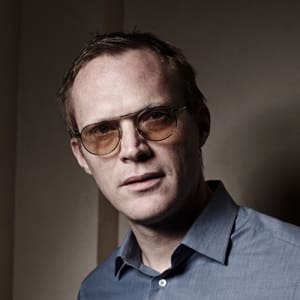
Judy Chicago
Judy Chicago is an American artist, educator and writer, and a leading figure in feminist art. She received critical acclaim in the 1970s for her art project “The Dinner Party.”
Synopsis
Judy Chicago was born on July 20, 1939, in Chicago, Illinois. She started working on a massive multimedia project entitled "The Dinner Party" in 1974. Collectively, the work tells the history of women in Western Civilization. It has been shown around the world, and is considered by many to be Chicago's greatest work. During her long career, Chicago has often stirred up controversy with some of her imagery.
Early Life
Born Judith Sylvia Cohen on July 20, 1939, in Chicago, Illinois, Judy Chicago is a famed artist, educator and writer, and a leading figure in feminist art. She first rose to fame and critical acclaim in the 1970s. As she later told LA Weekly, "I was raised in a family that believed in equal rights for women, which was very unusual for that time. The bad news was they never bothered to tell me that not everyone else believed in that, too."
Chicago started out taking art classes at the Art Institute of Chicago as a child, and then attended the University of California, Los Angeles in the early 1960s, earning a bachelor's in art in 1962. Some of her early works were abstract, including "Pacific Standard Time." In 1964, Chicago finished her master's degree in painting and sculpture at UCLA.
Early in her career, Chicago worked as a painting instructor at several California universities. In 1970, she launched the first feminist art program at California State University, Fresno. Her ideological beliefs also inspired Chicago to give herself a new last name, dropping Cohen and taking a moniker including the name of her hometown—this move allowed her to break away from the traditional system of bearing the name of a father or a husband.
Famous Works
As part of her commitment to create art from a female point of view, Judy Chicago started working on a massive multimedia project in 1974. Entitled "The Dinner Party," this art installation took five years to complete. It featured a long table topped with 39 illustrated plates. Each plate represents a woman of distinction and collectively the work tells the history of women in Western Civilization. This work has been shown around the world, and it is considered by many to be Chicago's greatest work.
From 1980 to 1985, Chicago focused her attention on "The Birth Project," a series of images exploring creation and birth. These images were made into needlework pieces by a crew of 150 craftspeople under Chicago's direction. Chicago's next big creative effort was "The Holocaust Project: From Darkness to Light." The project combined paintings by Chicago along with photographs by Donald Woodman, as well as tapestry and stained glass pieces designed by Chicago. The ambitious work debuted in 1993 at Chicago's Spertus Museum.
Later Career
Begun in 1994, "Resolutions: A Stitch in Time" took six years to complete. Through a combination of paintings and needlework, Chicago re-imagined "traditional proverbs for a mult-cultural future," as she explained on her website. The public got their first chance to see Resolutions in 2000 at the Museum of Art and Design in New York. Around this time, a retrospective of Judy Chicago's works on paper, entitled "Trials and Tributes," began at the Florida State University Art Museum in Tallahassee. A broader examination of Chicago's career was mounted at the National Museum of Women in the Arts in 2002.
In 2006, Chicago presented a series of works in glass at the LewAllen Contemporary, a gallery in Santa Fe, New Mexico. Her most famous work, "The Dinner Party," opened in its permanent home the following year. The work is a key piece in the Elizabeth A. Sackler Center for Feminist Art at the Brooklyn Museum.
Over her long career, Chicago has received numerous accolades. She has several honorary doctorates from such institutions as Duke University and Smith College. In 2012, she was honored with a lifetime achievement award at the Palm Springs Art Fair. Chicago has chosen to make art that is thought-provoking, and she has often stirred up controversy with some of her imagery. Her artwork is part of the collection of several leading art institutions, including the San Francisco Museum of Modern Art.




